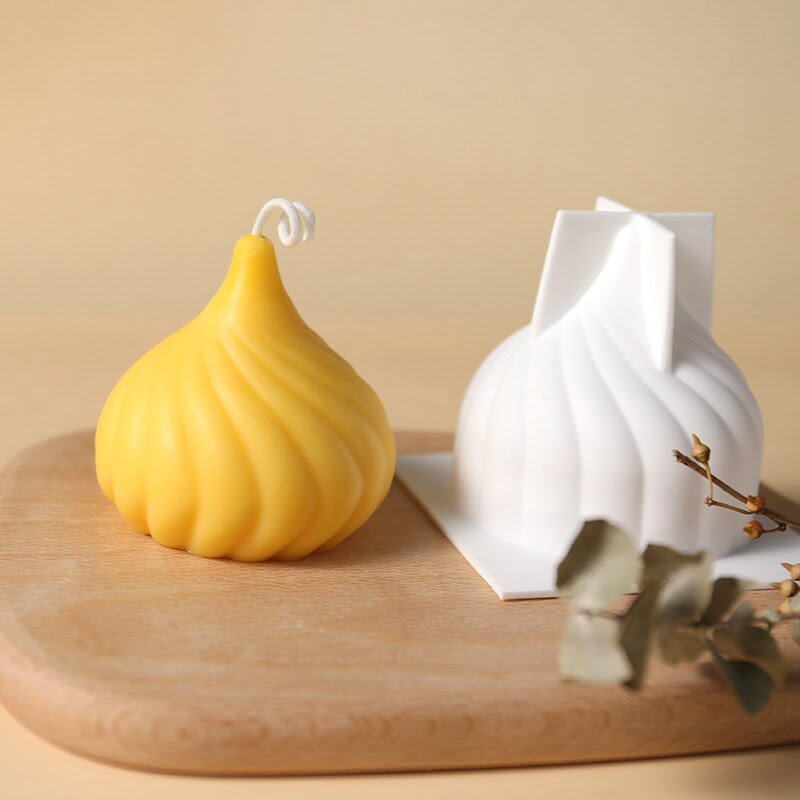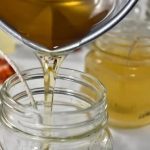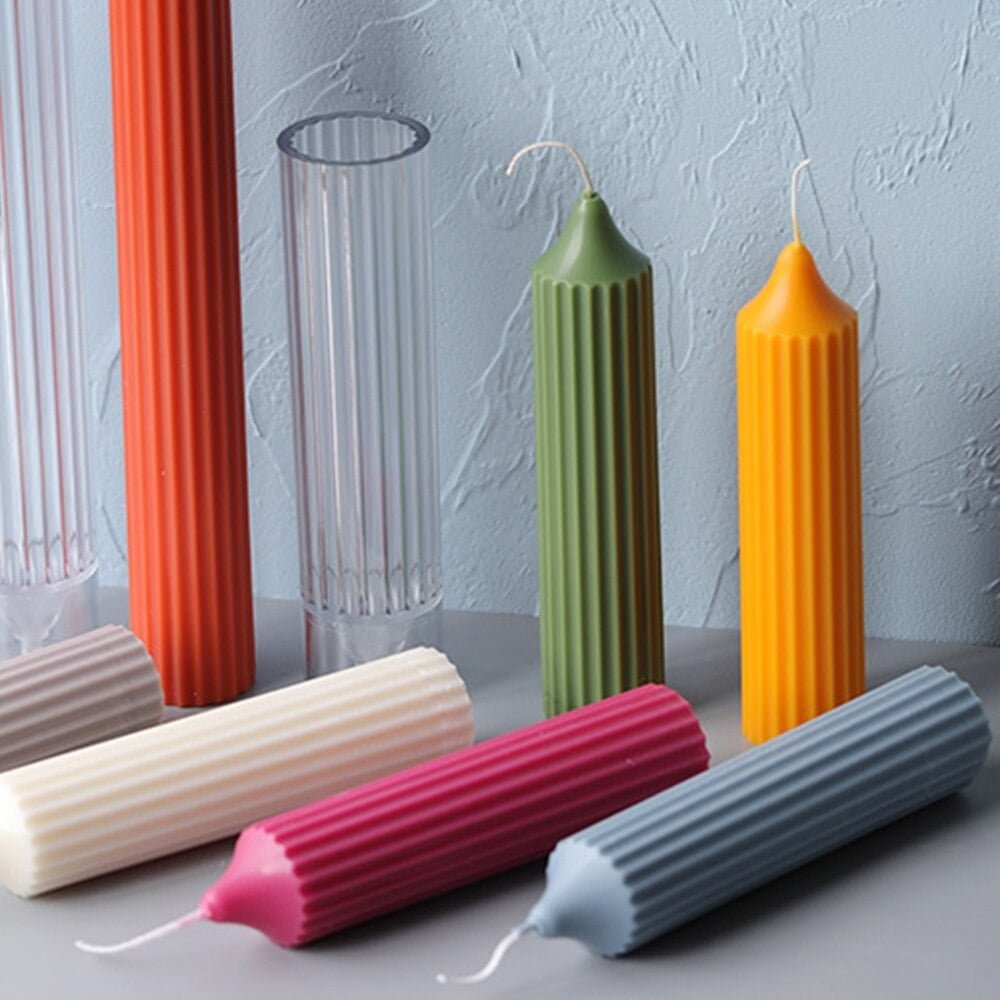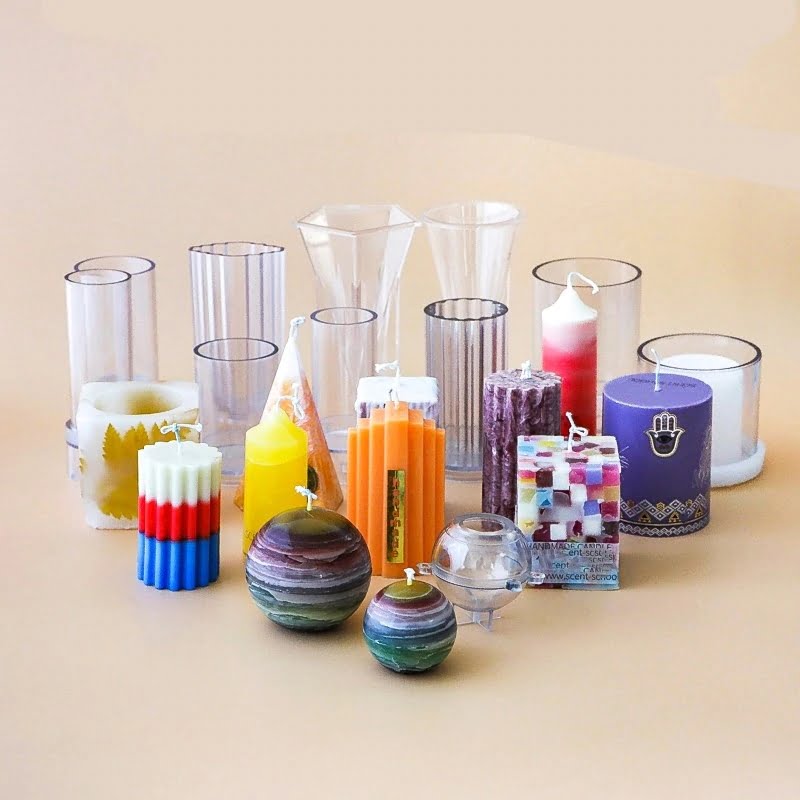When it comes to candle making, choosing the right wax is crucial in ensuring you achieve the desired results. One option that has gained popularity among candle makers is Gulf Wax. In this article, we will explore what Gulf Wax is, its unique properties that make it suitable for candle making, and how it compares to other wax options commonly used in the craft.
Gulf Wax is a paraffin wax widely known for its quality and versatility. It is a byproduct of the petroleum industry and derived from crude oil. This affordable and easily accessible wax can be found in most grocery stores or online retailers. Its low melting point makes it ideal for various crafting projects, including candle making.
Before delving into the benefits of using Gulf Wax for candle making, let’s take a brief look at the general process involved in creating candles. Candle making involves melting wax, adding dyes and fragrance if desired, pouring the melted wax into molds or containers with wicks, and allowing them to cool and solidify. The quality of the wax used greatly influences the final result, which is why selecting high-quality wax like Gulf Wax is important.
Stay tuned as we explore in detail the benefits of using Gulf Wax for candle making along with step-by-step instructions on how to use it effectively. We will also compare Gulf Wax to other common waxes used in candle making, discuss safety precautions when working with melting wax, provide user testimonials on its effectiveness, troubleshoot common issues, and offer additional resources for your reference.
Whether you are a seasoned candle maker or new to the craft, this article aims to equip you with valuable information on utilizing Gulf Wax to enhance your candle-making experience.
Benefits of Using Gulf Wax for Candle Making
Gulf Wax is a popular choice among candle makers for several reasons. It possesses unique properties that make it highly suitable for candle making, ensuring optimal results and customer satisfaction. One of the primary benefits of using Gulf Wax is its ability to provide a clean and consistent burn.
One of the key advantages of Gulf Wax is its low melting point. This characteristic allows it to melt quickly and evenly, resulting in a smooth and uniform distribution when poured into molds or containers. This makes the candle-making process more efficient and ensures that each candle will have a consistent appearance.
In addition to its melting point, Gulf Wax also contributes to a clean burn. When lit, candles made with Gulf Wax emit minimal smoke and soot. This is particularly important for those who are sensitive to allergies or respiratory conditions, as it helps create a healthier environment when burning candles.
Using Gulf Wax can also enhance the overall aesthetic appeal of the finished candles. Its composition gives candles an attractive glossy finish when properly used. Furthermore, Gulf Wax has excellent fragrance retention properties, allowing scent to be diffused throughout the room when burned.
Overall, the benefits of using Gulf Wax for candle making are numerous. Its low melting point, clean burn characteristics, and ability to enhance aesthetic appeal make it an excellent choice for anyone looking to create high-quality candles. By incorporating Gulf Wax into your candle making process, you can ensure that each candle you produce is not only visually appealing but also provides a delightful sensory experience for your customers.
Step-by-Step Guide on Using Gulf Wax for Candle Making
Gathering Your Materials
Before starting the candle making process with Gulf Wax, it is important to gather all the necessary materials. Here is a list of what you will need:
- Gulf Wax: Gulf Wax is typically sold in a 1-pound box and can be found in most grocery stores in the baking aisle.
- Candle Wicks: Choose wicks that are suitable for the size of the candles you plan to make. It is recommended to use cotton wicks as they provide a clean burn.
- Fragrance Oils (optional): If you want scented candles, you can add fragrance oils to your melted wax. There are various fragrances available, so choose one that appeals to your preference.
- Candle Dye (optional): If you wish to add color to your candles, you can use candle dye chips or liquid candle dye. Start with a small amount and adjust as needed.
- Candles Containers: Select containers for your candles such as jars, tins, or molds. Make sure they are heat-resistant and suitable for candle making.
The Candle Making Process
Follow these step-by-step instructions for using Gulf Wax in your candle making process:
- Prepare Your Workspace: Find a clean and well-ventilated area to work in. Place newspaper or a disposable tablecloth on your work surface to protect it from any spills or drips.
- Measure and Melt the Gulf Wax: Use a kitchen scale to measure the desired amount of Gulf Wax based on your specific project needs. Place the wax in a double boiler or a heat-resistant container set inside a pot filled with water. Heat gently over medium-low heat until the wax melts completely.
- Add Fragrance and/or Color (optional): Once the wax has melted, carefully add fragrance oil if desired and stir gently to incorporate it evenly throughout the melted wax mixture. If you want to add color, now is the time to do so. Start with a small amount of dye and stir well until the desired shade is achieved.
- Attach the Wick: While the wax is still melted, dip the metal base of your candle wick into the melted wax and then place it in the center of your candle container. Press it firmly to make sure it sticks in place.
- Pouring the Wax: Slowly pour the melted Gulf Wax into your prepared container, being careful not to disturb or shift the wick. Leave a small amount of space at the top for any finishing touches or additional fragrance oils.
- Allow to Cool: Let your candle sit undisturbed until it cools and solidifies completely. This process can take several hours, so be patient.
- Trim the Wick: Once the candle has cooled and hardened, trim the wick to about ¼ inch using scissors or wick trimmers.
- Enjoy Your Homemade Candle: Your Gulf Wax candle is now ready to be enjoyed. Light it up and enjoy a clean and consistent burn.
By following these step-by-step instructions, you can create beautiful candles using Gulf Wax as a versatile and reliable wax option for all your candle making projects.
Comparing Gulf Wax to Other Candle Making Wax Options
When it comes to candle making, choosing the right wax is crucial for achieving the desired results. Gulf Wax, a paraffin wax commonly found in grocery stores, is often considered a reliable option for candle makers. In this section, we will compare Gulf Wax to other popular wax options used in candle making and discuss the advantages and disadvantages of using Gulf Wax.
One of the main competitors to Gulf Wax is soy wax. Soy wax is derived from soybean oil and has gained popularity due to its natural and eco-friendly properties. While both Gulf Wax and soy wax have their merits, they possess distinct differences that set them apart.
Gulf Wax is known for its ability to hold fragrance well, resulting in strong scented candles. On the other hand, soy wax tends to have a more subtle scent throw. If you prefer highly scented candles that fill a room with fragrance, Gulf Wax may be the better choice for you.
Another significant factor when comparing these two waxes is burn time. Soy wax typically burns slower than paraffin waxes like Gulf Wax. This means that your candles made with soy wax will last longer compared to those made with Gulf Wax. However, some candle makers prefer paraffin waxes because they provide an even burn without tunneling or uneven pooling.
Additionally, it’s important to consider price and availability when selecting a wax for candle making. Often sold in grocery stores at an affordable price point, Gulf Wax is readily accessible for many aspiring candle makers. Comparatively, soy wax may be pricier and not as widely available.
Ultimately, the choice between using Gulf Wax or other alternatives depends on your specific preferences and goals as a candle maker. Considering factors such as scent throw, burn time, availability, and price can help you make an informed decision on which wax option aligns best with your needs.
Safety Precautions when Using Gulf Wax for Candle Making
When working with Gulf Wax for candle making, it is important to take certain safety precautions to ensure a safe and enjoyable experience. Handling hot wax can be dangerous if proper care is not taken, so it is crucial to follow guidelines and use caution throughout the process.
- Utilize Proper Ventilation: When melting Gulf Wax, it is essential to work in a well-ventilated area. This helps to prevent the build-up of harmful fumes and ensures that you are working in a safe environment. Open windows or turn on fans to promote air circulation during the melting process.
- Wear Protective Clothing: Before starting your candle-making project, be sure to wear protective clothing such as long sleeves, pants, and closed-toe shoes. Additionally, consider wearing gloves and goggles to protect against potential burns or splashes from hot wax.
- Handle Melting Wax with Care: Take caution when handling melted Gulf Wax as it can cause severe burns if mishandled. Use heat-resistant gloves or mitts when picking up containers or pouring the wax into molds. Be mindful of any spills and clean them up immediately to avoid accidentally slipping.
- Never Leave Melting Wax Unattended: It is crucial to always supervise the melting process and never leave heated wax unattended. Accidents can occur quickly, so make sure you stay present while the wax heats up and ensure that no flammable materials are nearby.
Remembering these safety precautions will help reduce the risk of accidents or injuries while using Gulf Wax for candle making. By prioritizing safety measures, you can enjoy a worry-free candle-making experience.
| Safety Precautions | Guidelines |
|---|---|
| Utilize Proper Ventilation | Work in a well-ventilated area with open windows or fans to promote air circulation. |
| Wear Protective Clothing | Wear long sleeves, pants, closed-toe shoes, gloves, and goggles for added protection against burns and splashes. |
| Handle Melting Wax with Care | Use heat-resistant gloves or mitts when handling hot wax to prevent burns. Clean up any spills immediately. |
| Never Leave Melting Wax Unattended | Always supervise the melting process and ensure no flammable materials are nearby. |
Frequently Asked Questions about Gulf Wax for Candle Making
Can Gulf Wax be used for all types of candles?
Yes, Gulf Wax can be used for various types of candles. Whether you are making container candles, pillar candles, or even taper candles, Gulf Wax can provide excellent results. Its unique formulation allows it to perform well in different candle-making techniques and styles.
Is Gulf Wax safe to use in scented candles?
Yes, Gulf Wax is safe to use in scented candles. It does not interfere with the fragrance oils or alter their scent throw. When making scented candles with Gulf Wax, simply follow the same instructions as you would for unscented candles. You can add your desired fragrance oil during the melting process and proceed with the rest of the candle-making steps.
How long does Gulf Wax take to melt?
The melting time for Gulf Wax can vary depending on several factors such as the heat source and the quantity being melted. Generally, it takes around 10-15 minutes for a block of Gulf Wax (1 pound) to fully melt when using a double boiler method.
However, if you are using a microwave or another heating method, the melting time may be shorter or longer. It is important to monitor the wax closely during this process to prevent overheating or burning.
Can I color my candles when using Gulf Wax?
Absolutely. You can easily add color to your candles when using Gulf Wax by incorporating liquid or dye chips specifically made for candle making into your melted wax. Follow the manufacturer’s instructions regarding usage rates to achieve your desired color intensity. Remember that a little goes a long way, and it’s always recommended to test small batches before committing larger quantities of wax and colorant.
How should I store leftover Gulf Wax?
If you have any leftover melted wax, it is best to store it in airtight containers or resealable bags. Make sure the wax has fully cooled and solidified before storing it. Avoid exposure to direct sunlight or extreme temperatures, as this can cause the wax to melt or become discolored. When you are ready to use the stored wax for future candle making projects, simply remelt it following the appropriate instructions and guidelines.
User Testimonials on the Effectiveness of Gulf Wax for Candle Making
When it comes to candle making, many crafters and hobbyists turn to Gulf Wax as their go-to wax. But what exactly makes Gulf Wax so effective for candle making? Let’s hear from some experienced candle makers who have used Gulf Wax and see why they believe it is a top choice.
- “I’ve been making candles for years, and I’ve tried various waxes, but Gulf Wax always delivers consistent results. The texture and melting point of Gulf Wax make it easy to work with, ensuring a smooth and even burn every time.” – Sarah H.
- “Gulf Wax has become my secret ingredient for achieving beautiful colors in my soy candles. The wax holds fragrance oils and dyes exceptionally well, resulting in vibrant candles that not only smell amazing but also look stunning.” – Michael L.
- “One of the reasons I love using Gulf Wax is its ability to produce clean-burning candles with minimal soot or smoke. It’s important to me to create a healthy environment when burning candles, and Gulf Wax helps me achieve that goal.” – Emily M.
These testimonials reflect just a few of the positive experiences that candle makers have had when using Gulf Wax in their projects. Whether it’s the ease of use, enhanced fragrance retention, or clean burn properties, many crafters find that Gulf Wax exceeds their expectations.
If you’re considering using Gulf Wax for your candle making endeavors, these user testimonials should give you confidence in its effectiveness. However, keep in mind that everyone’s experience might be different, so it’s always a good idea to experiment and find what works best for your specific needs.
Troubleshooting Tips for Using Gulf Wax in Candle Making
While Gulf Wax is known for its versatility and effectiveness in candle making, there are occasionally issues or challenges that candle makers may encounter when working with this wax. This section will address some of the common problems that can arise and provide helpful solutions and suggestions to overcome these obstacles.
One of the challenges that candle makers may face when using Gulf Wax is poor scent throw. Scent throw refers to how well a candle emits its fragrance when burned. If you find that your Gulf Wax candles are lacking in scent throw, there are several potential solutions to consider.
Firstly, ensure that you are using a proper amount of high-quality fragrance oil and that it is thoroughly mixed into the melted wax before pouring it into the mold or container. Additionally, using a smaller wick size may allow for more efficient burning and better fragrance dispersion.
Another common issue that can occur is tunneling, which refers to the formation of a hole down the center of the candle while leaving an excess amount of unmelted wax on the sides of the container. Tunneling can be caused by improperly trimming the wick or by not allowing enough time for a full melt pool to form during each burn session.
To prevent tunneling with Gulf Wax candles, make sure to trim the wick to an appropriate length (usually around ¼ inch) before lighting it and allow enough time during each burn session for a complete melt pool to develop.
Lastly, frosting can sometimes appear on candles made with Gulf Wax, which refers to a whitish or crystalline-like residue on the surface of the candle. While frosting does not affect performance or scent throw, it can be undesirable from an aesthetic perspective. To minimize frosting on your candles, try pouring at a slightly higher temperature (around 160-170 degrees Fahrenheit) and avoid exposing them to sudden changes in temperature during curing.
By following these troubleshooting tips and adjusting your techniques if necessary, you can overcome any challenges that may arise when using Gulf Wax for candle making. Remember that practice and experimentation are key to achieving the desired results, and don’t be discouraged if you encounter setbacks along the way. With time and experience, you’ll be able to create beautiful and fragrant candles using Gulf Wax.
Conclusion
After considering the benefits, step-by-step guide, comparisons, safety precautions, user testimonials, and troubleshooting tips of Gulf Wax for candle making, it is clear that Gulf Wax is a highly effective and versatile option for candle makers. This conclusion will summarize the key points discussed throughout the article and provide a final recommendation on whether Gulf Wax is a good choice for candle making.
Throughout this article, we have explored the various advantages of using Gulf Wax for candle making. Its unique properties make it suitable for creating quality candles with a clean and consistent burn. Gulf Wax provides excellent fragrance retention as well as an even melt pool, resulting in an enjoyable and long-lasting experience for consumers.
The step-by-step guide provided in this article offers detailed instructions on how to properly use Gulf Wax in the candle making process. Following these guidelines, along with implementing the tips and tricks mentioned, will enable candle makers to optimize the effectiveness of Gulf Wax and create beautiful candles.
Comparing Gulf Wax to other wax options commonly used in candle making has revealed its advantages and disadvantages. While other waxes may have their own merits, Gulf Wax stands out for its reliability and ease of use. It consistently produces high-quality candles without sacrificing any crucial aspects of the candle-making process.
Safety precautions are essential when working with melting wax, and Gulf Wax is no exception. Proper ventilation and careful handling are imperative to ensure a safe environment during candle making. By following these guidelines closely, candle makers can avoid accidents or mishaps.
User testimonials provided positive experiences from fellow candle makers who have used Gulf Wax in their projects. These first-hand accounts reinforce the effectiveness of using Gulf Wax for creating exceptional candles. The versatility of this wax allows for various creative possibilities in terms of design and experimentation.
Lastly, when encountering challenges or issues while using Gulf Wax in candle making, the troubleshooting tips outlined in this article can be incredibly helpful. It provides practical solutions to common problems that may arise during the process, enabling candle makers to overcome obstacles and continue creating beautiful candles with Gulf Wax.
Additional Resources and References
In conclusion, Gulf Wax is a reliable option for candle making due to its unique properties and ability to provide a clean and consistent burn. Throughout this article, we have explored the benefits of using Gulf Wax, including its versatility and cost-effectiveness. We have also provided a step-by-step guide on how to use Gulf Wax effectively, along with safety precautions and troubleshooting tips.
For those interested in further exploration, there are additional resources and references available. These resources can provide more in-depth information on Gulf Wax and candle making in general. Books, websites, tutorials, and other sources can offer valuable insights and techniques that can elevate your candle making skills.
In summary, Gulf Wax proves itself as a reliable choice for candle making. Its unique properties make it suitable for various projects, while providing a consistent burn. By following the provided instructions and safety precautions, you can maximize the effectiveness of Gulf Wax in your candle making endeavors. Remember to explore additional resources and references to enhance your knowledge and skills in this craft. Happy candle making.
Frequently Asked Questions
Is Gulf Wax same as paraffin?
Gulf Wax is a type of paraffin wax, so in that sense, it can be considered the same as paraffin. Paraffin wax is a petroleum-derived wax that has been widely used for various purposes, including candle making. Gulf Wax is a brand that specifically offers paraffin wax for household use, primarily for canning and candle making.
How do you melt Gulf wax for candles?
To melt Gulf Wax or any type of paraffin wax for candles, a double boiler method is commonly used. First, you will need to cut or break the Gulf Wax into small pieces or shavings to help it melt more easily. Next, fill a pot with water and bring it to a simmer.
Place a heatproof container on top of the pot but make sure it does not touch the water directly (“double boiler” effect). Add the Gulf Wax pieces into the top container and allow them to gradually melt, stirring occasionally. It is important to monitor the temperature and avoid overheating as excessive heat can pose safety hazards or affect the quality of the melted wax.
What kind of wax is best for candle making?
The best kind of wax for candle making depends on various factors such as personal preference, desired outcome, and intended use of the candles. There are several types of waxes commonly used in candle making: paraffin wax (including brands like Gulf Wax), soy wax, beeswax, palm wax, and more. Each type has its own advantages and disadvantages. Paraffin wax is popular due to its affordability, easy availability, and ability to hold fragrance well.
Soy wax is known for being natural and environmentally friendly while offering good scent throw. Beeswax provides a natural honey scent and burns cleanly. Ultimately, identifying the best type of wax for candle making requires considering factors like aesthetics, burning characteristics,

Welcome to my candle making blog! In this blog, I will be sharing my tips and tricks for making candles. I will also be sharing some of my favorite recipes.





